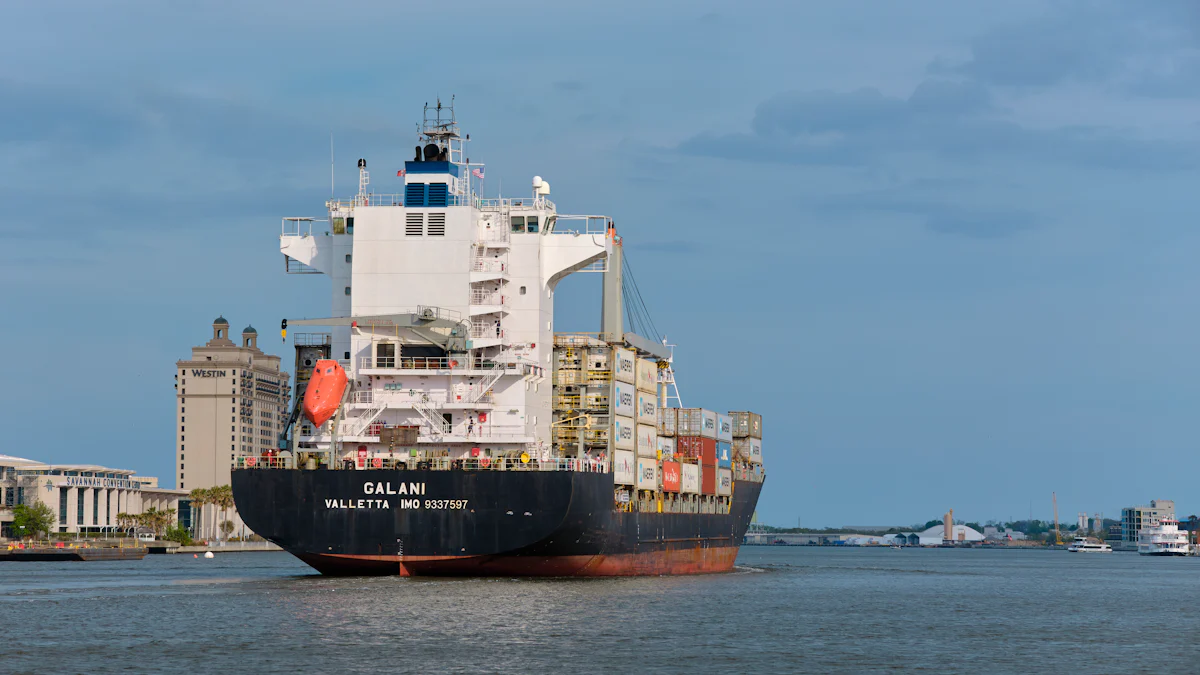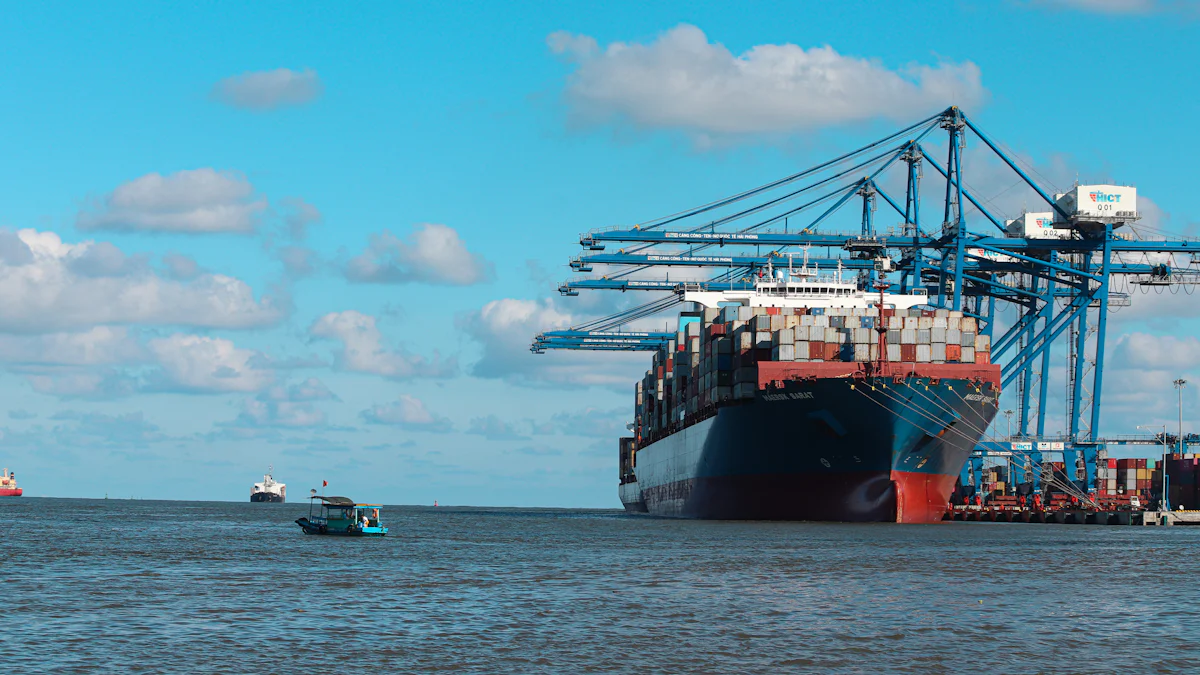Navigating the Future: Ocean Freight Market Trends and Forecasts

The ocean freight market is a vital component of international trade, enabling the transportation of goods worldwide. The global seaborne trade volume has significantly increased from 1990 to 2021, surpassing 11 billion tons. This market is constantly evolving, driven by technological innovations and regulatory updates. It is crucial for stakeholders to stay informed about present developments and upcoming projections to effectively navigate the changing environment.
Current Trends in the Ocean Freight Market

Technological Advancements
Automation and AI in Shipping
Automation and artificial intelligence (AI) are revolutionizing the ocean freight market. Companies are implementing AI to optimize routes, reduce fuel consumption, and enhance operational efficiency. Automated systems manage cargo handling and port operations, minimizing human error and increasing productivity. AI algorithms predict demand patterns and optimize supply chain management, providing a competitive edge.
Blockchain for Supply Chain Transparency
Blockchain technology is transforming supply chain transparency in the ocean freight market. Blockchain creates immutable records of transactions, ensuring data integrity and security. This technology enhances traceability, reducing fraud and improving compliance with regulatory standards. Stakeholders can access real-time information on shipment status, fostering trust and collaboration across the supply chain.
Environmental Regulations
IMO 2020 and its Impact
The International Maritime Organization (IMO) 2020 regulation mandates a significant reduction in sulfur emissions from ships. This regulation aims to mitigate the environmental impact of shipping activities. Carriers have adopted low-sulfur fuels and installed scrubbers to comply with these standards. The transition to cleaner fuels has increased operational costs but has also driven innovation in fuel technology.
Sustainable Shipping Practices
Sustainable shipping practices are gaining traction in the ocean freight market. Companies are investing in low-carbon fuels and emissions-reduction technologies. Cleaner vessels and alternative fuels, such as liquefied natural gas (LNG), are becoming more prevalent. These initiatives aim to reduce the carbon footprint of maritime transport and promote environmental sustainability.
Market Dynamics
Demand and Supply Fluctuations
The ocean freight market experiences fluctuations in demand and supply. Economic conditions, seasonal trends, and geopolitical events influence these fluctuations. For instance, peak seasons see increased demand for shipping services, leading to higher freight rates. Conversely, off-peak periods may result in excess capacity and lower rates. Understanding these dynamics is crucial for effective capacity planning and pricing strategies.
Impact of Global Trade Policies
Global trade policies significantly impact the ocean freight market. Tariffs, trade agreements, and regulatory changes shape the flow of goods across borders. For example, trade tensions between major economies can disrupt supply chains and affect shipping volumes. Conversely, favorable trade agreements can stimulate trade and increase demand for ocean freight services. Staying informed about policy developments is essential for navigating the complexities of international trade.
Future Forecasts for the Ocean Freight Market

Predicted Technological Innovations
Autonomous Ships
Autonomous ships represent a significant advancement in the ocean freight market. These vessels operate with minimal human intervention, relying on advanced sensors and navigation systems. Autonomous ships promise to reduce labor costs and enhance safety by minimizing human error. The development of autonomous ships also aims to optimize fuel consumption and improve overall efficiency.
Advanced Data Analytics
Advanced data analytics play a crucial role in shaping the future of the ocean freight market. Companies utilize big data to analyze shipping patterns and predict market trends. This technology enables more accurate demand forecasting and route optimization. By leveraging data analytics, companies can make informed decisions that enhance operational efficiency and reduce costs.
Environmental and Regulatory Changes
Future Emission Standards
Future emission standards will significantly impact the ocean freight market. The International Maritime Organization (IMO) continues to impose stricter regulations to reduce greenhouse gas emissions. The IMO's Fourth Greenhouse Gas Study highlights the urgent need to cut emissions, predicting a potential increase of up to 250% by 2050. Compliance with these standards requires investment in cleaner technologies and alternative fuels.
Green Shipping Initiatives
Green shipping initiatives are gaining momentum in the ocean freight market. Companies are adopting measures to reduce their environmental footprint. The shift towards low-carbon fuels and energy-efficient vessels is becoming more prevalent. The introduction of the Carbon Intensity Indicator (CII) by the IMO encourages companies to measure and reduce their emissions. These initiatives aim to promote sustainability and mitigate the environmental impact of shipping activities.
Economic and Market Projections
Growth in Emerging Markets
Emerging markets are expected to drive growth in the ocean freight market. Regions such as Asia and Africa are experiencing rapid economic development and increased trade activities. The demand for shipping services in these regions is projected to rise, creating new opportunities for market expansion. Companies must strategically position themselves to capitalize on this growth.
Long-term Trade Agreements
Long-term trade agreements will shape the future of the ocean freight market. These agreements facilitate the flow of goods between countries and promote stable trade relations. For instance, favorable trade agreements can boost shipping volumes and create a more predictable market environment. Companies must stay informed about policy developments to navigate the complexities of international trade effectively.
Strategies for Navigating the Future
Adapting to Technological Changes
Investing in New Technologies
Companies must invest in new technologies to stay competitive in the ocean freight market. Advanced systems like AI and machine learning enhance operational efficiency. Automated cargo handling reduces errors and speeds up processes. Blockchain technology ensures data integrity and transparency. These investments lead to cost savings and improved service quality.
Training and Development for Workforce
Training and development programs are essential for workforce adaptation. Employees need skills to operate new technologies effectively. Continuous education ensures staff remain updated on industry advancements. Companies should offer specialized training sessions and certifications. A well-trained workforce boosts productivity and operational efficiency.
Compliance with Environmental Regulations
Implementing Sustainable Practices
Sustainable practices are crucial for regulatory compliance. Companies should adopt low-carbon fuels and energy-efficient vessels. Investments in renewable energy sources reduce environmental impact. Implementing green shipping initiatives promotes sustainability. These practices align with global environmental standards and enhance corporate reputation.
Monitoring and Reporting Emissions
Monitoring and reporting emissions is vital for regulatory adherence. Companies must track their carbon footprint accurately. Advanced analytics tools help in real-time monitoring. Regular reporting ensures transparency and accountability. Compliance with emission standards avoids penalties and fosters trust among stakeholders.
Market Adaptation Strategies
Diversifying Supply Chains
Diversifying supply chains mitigates risks associated with market fluctuations. Companies should source materials from multiple regions. Establishing alternative routes ensures continuity during disruptions. Diversification enhances resilience against geopolitical tensions and economic downturns. This strategy secures a stable supply chain network.
Risk Management and Contingency Planning
Effective risk management and contingency planning are essential. Companies must identify potential risks and develop mitigation strategies. Regular risk assessments ensure preparedness for unforeseen events. Contingency plans provide clear guidelines during crises. Robust risk management enhances operational stability and reduces financial losses.
The ocean freight market continues to evolve with significant trends and forecasts shaping its future. Key trends include technological advancements like AI and blockchain, along with stringent environmental regulations. Future projections highlight the rise of autonomous ships and the importance of green shipping initiatives.
Staying informed and adaptable remains crucial for industry stakeholders. Companies must embrace new technologies and comply with evolving regulations. Strategic planning and risk management will ensure resilience against market fluctuations.
The future of ocean freight holds promise, driven by innovation and sustainability. Industry players must remain proactive to navigate this dynamic landscape successfully.
See Also
Revealing the Latest in Sea Freight Logistics for 2024
Understanding the Influence: Trends in Logistics Risks
Analyzing the Complete Picture: The Future of LTL Freight
Navigating the Future: Logistics Enhanced by Digital Tech
Exploring the Possibilities: AI's Role in Logistics Revealed
